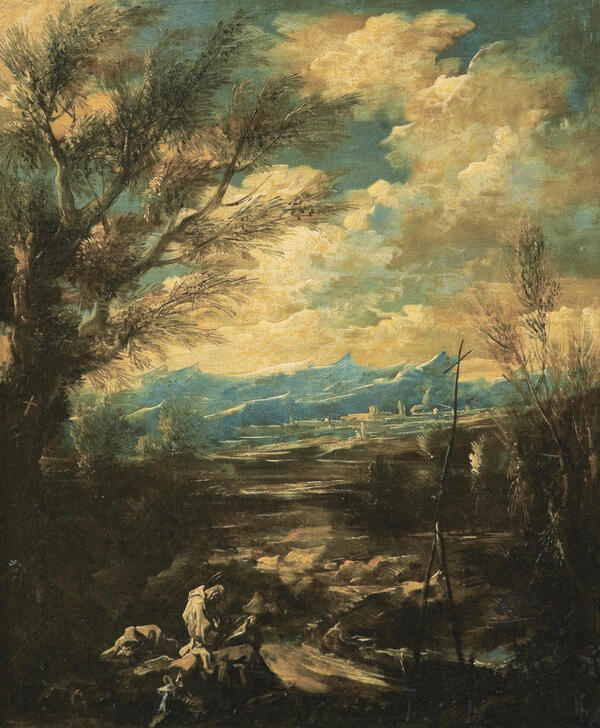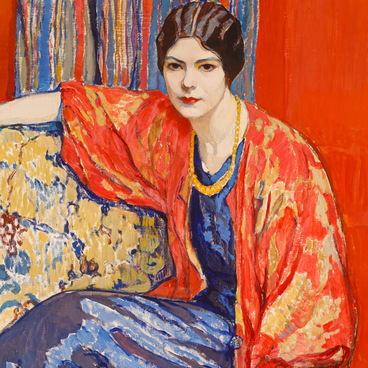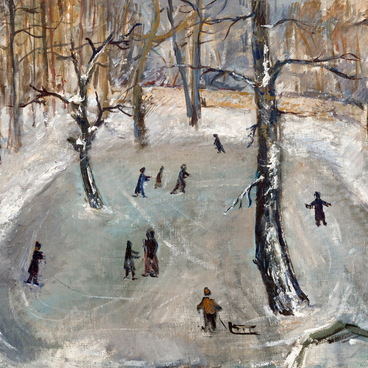In the 17th and 18th centuries, the Baroque was not merely a painting style, but a mindset and a philosophy that originated in the period of flourishing creativity. The word “baroque” is associated with everything extraordinary, ornate, extravagant, and peculiar. Italian Baroque artists explored new forms and restlessly questioned the basics of traditional painting.
These innovative experiments gave birth to a wide range of brand-new styles and painting schools, including the Valencian, Roman, Bolognese, Neapolitan, and the Genoese School which was represented by the mannerist Alessandro Magnasco. Also known as il Lissandrino, he was born in Genoa, a city on the coast of the Ligurian Sea.
Alessandro was born into a family of the painter Stefano Magnasco in 1667. His father became his first teacher and mentor. After his father’s death, Alessandro moved to Milan where he was introduced to the art of famous masters and continued to study painting.
Influenced by the prominent representatives of the Genoese School, including Jacques Callot, Stefano della Bella, Salvator Rosa, and Tintoretto, he developed his own technique and started combining various textures. Modern art experts also praise his distinctive style of applying paint with swift brushstrokes and even hitting the canvas with the brush.
The art of Alessandro Magnasco was heavily inspired by myths and Bible stories. At the same time, his favorite characters can hardly be called spiritual or religious. In his paintings, il Lissandrino often portrayed robbers, rogues, vagabonds, jail keepers, and gypsies. He filled the familiar scenes with humor and satire and was a 17th-century caricaturist. The painter paid close attention to depicting elaborate detail and the background, filled his paintings with diverse characters, and urged the viewer to look closer at the story behind the painting.
The painting “River Landscape with Hermits” shows a windstorm in seemingly fine weather. Against the force of nature, people look as powerless as grains of sand. The artist’s flowing brushstroke creates the feeling of a single continuous paste of paint. The painting is based on a dark brown color palette with ocher hues.
These innovative experiments gave birth to a wide range of brand-new styles and painting schools, including the Valencian, Roman, Bolognese, Neapolitan, and the Genoese School which was represented by the mannerist Alessandro Magnasco. Also known as il Lissandrino, he was born in Genoa, a city on the coast of the Ligurian Sea.
Alessandro was born into a family of the painter Stefano Magnasco in 1667. His father became his first teacher and mentor. After his father’s death, Alessandro moved to Milan where he was introduced to the art of famous masters and continued to study painting.
Influenced by the prominent representatives of the Genoese School, including Jacques Callot, Stefano della Bella, Salvator Rosa, and Tintoretto, he developed his own technique and started combining various textures. Modern art experts also praise his distinctive style of applying paint with swift brushstrokes and even hitting the canvas with the brush.
The art of Alessandro Magnasco was heavily inspired by myths and Bible stories. At the same time, his favorite characters can hardly be called spiritual or religious. In his paintings, il Lissandrino often portrayed robbers, rogues, vagabonds, jail keepers, and gypsies. He filled the familiar scenes with humor and satire and was a 17th-century caricaturist. The painter paid close attention to depicting elaborate detail and the background, filled his paintings with diverse characters, and urged the viewer to look closer at the story behind the painting.
The painting “River Landscape with Hermits” shows a windstorm in seemingly fine weather. Against the force of nature, people look as powerless as grains of sand. The artist’s flowing brushstroke creates the feeling of a single continuous paste of paint. The painting is based on a dark brown color palette with ocher hues.



